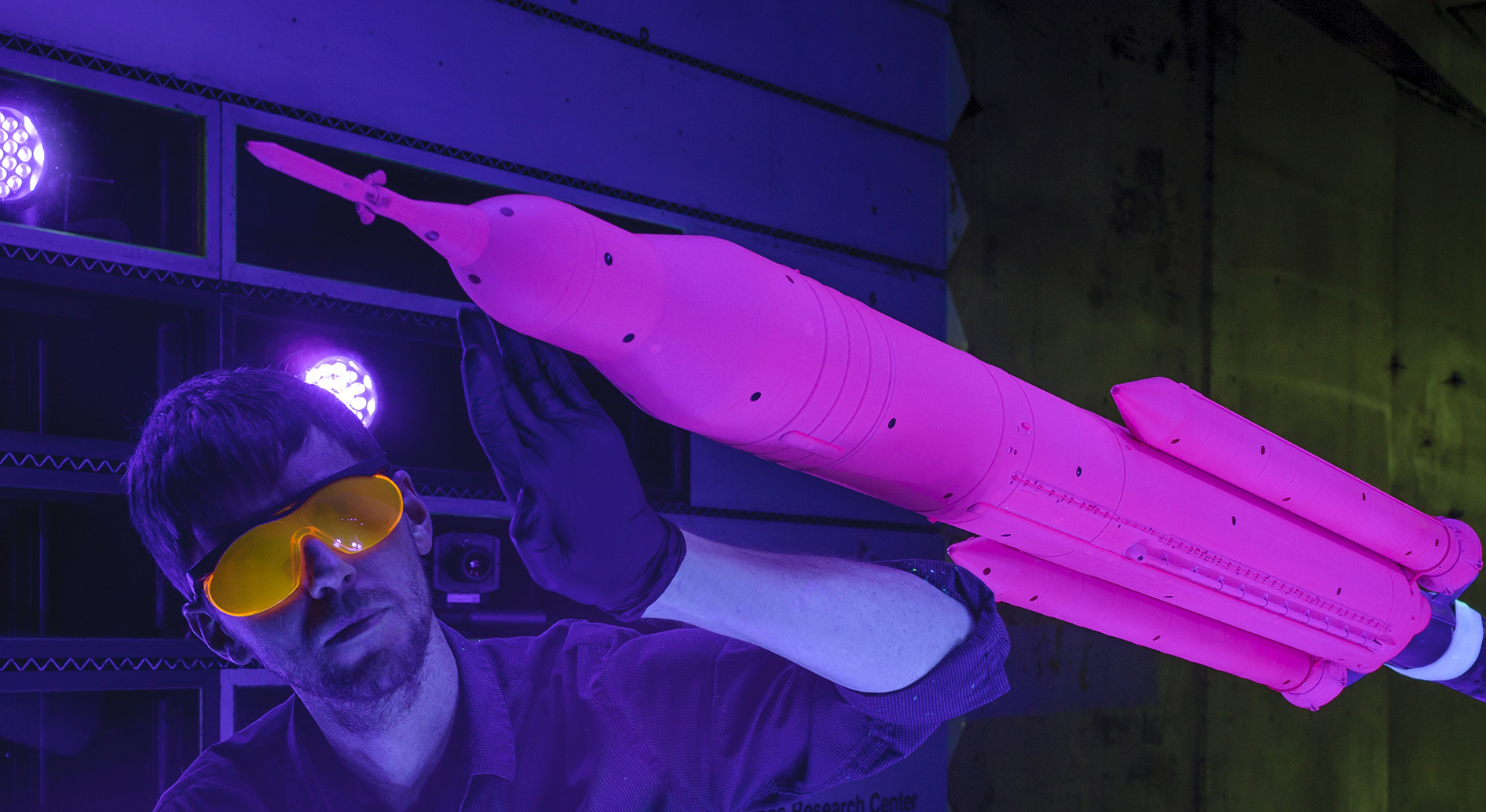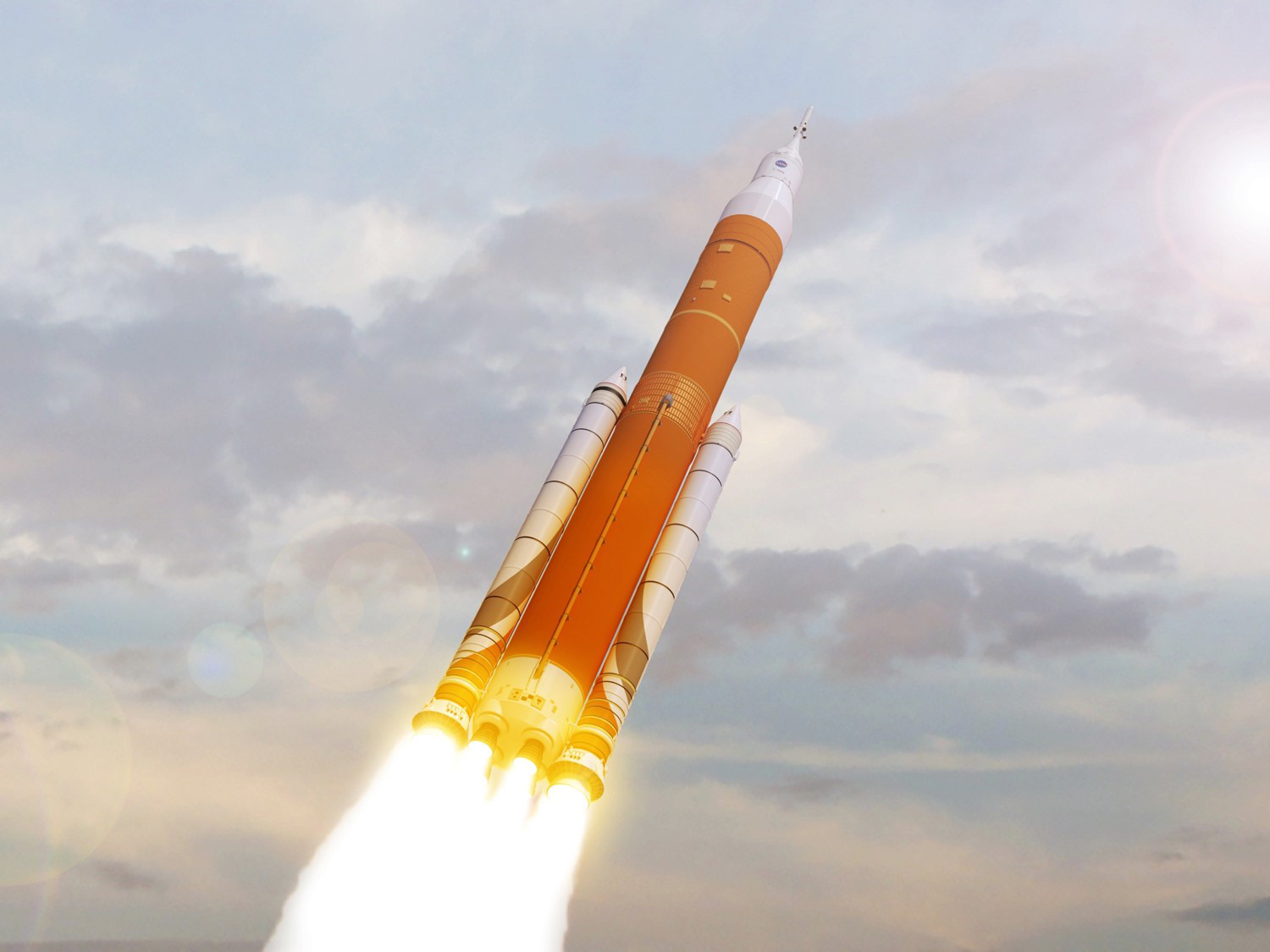
Dr. Patrick Shea inspects a nearly 4 3/4-foot (1.3 percent scale) model of the second generation of NASA’s Space Launch System in a wind tunnel for ascent testing at NASA’s Ames Research Center in Silicon Valley, Calif. The tests will help determine the larger, more powerful rocket’s behavior as it climbs and accelerates through the sound barrier after launch. Photo Credit: NASA

Image Credit: NASA
New wind tunnel tests conducted at NASA’s Ames Research Center in Silicon Valley, Calif., were conducted for the second generation of SLS. It will deliver a 105-metric-ton (115-ton) lift capacity and will be 364 feet tall in the crew configuration — taller than the Saturn V that launched astronauts on missions to the moon. The rocket’s core stage will be the same, but the newer rocket will feature a powerful exploration upper stage. On SLS’s second flight with Orion, the rocket will carry up to four astronauts on a mission around the moon, in the deep-space proving ground for the technologies and capabilities needed on NASA’s Mars mission.
Scale models of the upgraded rocket in crew and cargo configurations are being carefully positioned in wind tunnels for test programs to obtain data needed to refine the design of the rocket and its guidance and control systems, said Dr. John Blevins, SLS lead engineer for aerodynamics and acoustics at Marshall. During hundreds of test runs at NASA’s Langley Research Center in Hampton, Va., and Ames Research Center, engineers are measuring the forces and loads that air induces on the launch vehicle during every phase of its mission.
“All the critical aerodynamic environments, from when the upgraded rocket leaves the Vehicle Assembly Building at Cape Canaveral to launch, acceleration through the sound barrier and booster separation at greater than Mach 4 are evaluated in these four tests,” Blevins said.
The current SLS, which is being manufactured, will be 322 feet tall and able to lift 70 metric tons. The first test flight of the SLS, anticipated in 2018, will carry an unmanned Orion spacecraft beyond the moon and return to Earth, deploying 13 small science and technology satellites into deep space along the way.
Filed Under: Aerospace + defense




